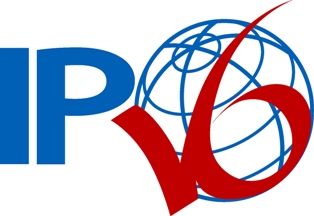IPv6 Traffic Remains Minuscule

Despite growing interest in IPv6, the traffic over the protocol remains less than 1 percent of overall online traffic, Arbor Networks has found
Even though the number of available IPv4 addresses are dwindling faster than expected, the move to IPv6 remains sluggish, according to a recent study from Arbor Networks.
In a study of native IPv6 traffic volumes across multiple large carriers, IPv6 adoption remains minuscule as a result of technical and design challenges, no economic incentives, and a dearth of IPv6 content, according to the Arbor Networks study released on 19 April. During the six-month study period, Arbor Networks researchers found that traffic over IPv4 networks grew by an average of 40 percent to 60 percent while IPv6 traffic actually decreased by an average of 12 percent proportionately because it was not growing fast enough in comparison to IPv4 traffic.
Rising IPv6 traffic
“Despite 15 years of IPv6 standards development, vendor releases and advocacy, only a small fraction of the Internet has adopted IPv6,” said Arbor Networks chief scientist Craig Labovitz.
While actual IPv6 traffic volumes have gone up, it has shrunk as a percentage of all Internet traffic, to a mere 0.25 percent of all net traffic, Labovitz said. The top IPv6 applications are largely peer-to-peer applications such as BitTorrent, accounting for 61 percent of traffic. In comparison, peer-to-peer networks account for 8 percent of IPv4-based traffic. Web traffic makes up the second largest block of traffic on both IPv4 and IPv6 networks, but the differences are still striking. HTTP traffic accounts for 19 percent of IPv4 traffic, compared to a mere 4.6 percent over IPv6.
Online video, such as Netflix, YouTube and web video, accounted for a little less than half of IPv4 traffic, but they didn’t even make a dent over IPv6. It’s ironic considering Netflix is one of the few major companies with an IPv6-accessible website.
Users and businesses that are interested in migrating, but stymied by their ISP’s lack of IPv6 offerings, can use tunnels to get IPv6 connectivity. Arbor examined the total IPv6 traffic over a specific 24-hour period in February and found over 250,000 such tunnels. More than 90 percent of the tunnels belonged to five major tunnel brokers, including Hurricane Electric, Anycast and Microsoft’s Teredo service.
The Arbor research highlighted the fact that most companies and ISPs are way behind in their transition plans to move their networking infrastructure to the newer address space. This is worrying in light of the fact that the remaining IPv4 addresses are running out faster than predicted.
ICANN (Internet Corporation for Assigned Names and Numbers) allocated the last blocks of IPv4 addresses to the five regional internet registries in a public ceremony on 3 February.
While existing sites will continue working just fine even when the last IPv4 address has been assigned, any organisations wanting to expand or add new capabilities will be unable to without transitioning their network infrastructure to IPv6.
IPv4 exhaustion
In fact, that’s more or less the case for Asia-Pacific businesses. The Asia Pacific Network Information Centre, the RIR responsible for assigning IP addresses to the region, announced the release of its last available batch of IPv4 addresses on 15 April. While analysts had predicted APNIC would run out of the IP address blocks first, the predictions had estimated the supply would last till the summer.
“Considering the ongoing demand for IP addresses, this date effectively represents IPv4 exhaustion for many of the current operators in the Asia Pacific region,” said APNIC director general Paul Wilson.
APNIC have placed the remaining IPv4 addresses under limited distribution. “From this day onwards, IPv6 is mandatory for building new Internet networks and services,” Wilson said.
Asia-Pacific is well on the way to become the first “IPv6-enabled region”, but businesses need to begin the migration if they haven’t already done so in order to “remain viable”, according to Wilson.
The American Registry for Internet Numbers received 253 requests for IPv6 address blocks from internet service providers in the first quarter of 2011, compared to 134 requests in the last quarter of 2010. It’s not just ISPs talking about IPv6, as ARIN also received 247 end-user requests for IPv6 address space in the first quarter 2011, compared to 103 requests in first quarter 2010. ARIN received a total of 434 requests from ISPs in 2010, and expects requests to exceed that in 2011.
The upcoming “World IPv6 Day” on 8 June marks “a major milestone in the Internet’s evolution”, Labovitz said, because it will force businesses and ISPs to stress test the global network infrastructure. “Will the flood of IPv6 traffic result in network failures? As an industry, we’re not sure,” Labovitz concluded.
